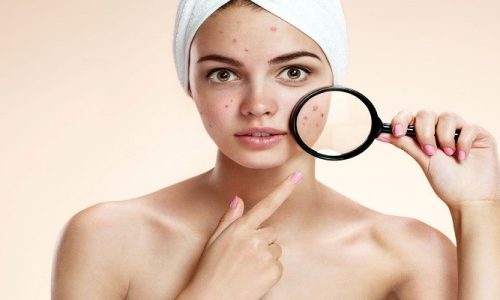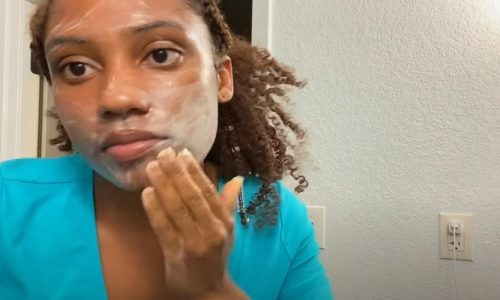Blushing is a physiological response that occurs when blood rushes to the face, often triggered by emotions such as embarrassment, stress, or excitement. While it is commonly associated with a visible reddening of the face in lighter-skinned individuals, the phenomenon of blushing in people with darker skin tones is less understood and often less visible. This article explores the science behind blushing, how it manifests in darker skin, and the challenges in detecting and understanding this response.
The Science of Blushing
Blushing is an involuntary response controlled by the autonomic nervous system. When a person experiences strong emotions, the body releases adrenaline, which causes the blood vessels in the face to dilate, increasing blood flow and resulting in a reddened appearance. This response is part of the body’s “fight-or-flight” mechanism, which prepares the body to respond to perceived threats or stressful situations.
Physiological Mechanisms
The physiological process of blushing involves several key components:
- Adrenaline Release: Adrenaline increases heart rate and dilates blood vessels, including those in the face.
- Blood Vessel Dilation: The dilation of blood vessels in the facial skin allows more blood to flow to the area, causing the skin to appear redder and warmer.
- Involuntary Nature: Blushing is an automatic response that cannot be consciously controlled, similar to other autonomic functions like heart rate and breathing.
Blushing in Dark Skin: Visibility and Perception
Blushing in individuals with darker skin tones presents unique challenges in terms of visibility and perception. The increased melanin in darker skin can obscure the reddening effect that is more easily seen in lighter skin. However, this does not mean that people with dark skin do not blush; rather, the signs of blushing may be less apparent or manifest differently.
Signs of Blushing in Dark Skin
While the classic red flush may not be as visible, other signs can indicate blushing in darker skin tones:
- Subtle Color Changes: Some individuals may notice a slight darkening or purplish hue in the areas where blushing occurs.
- Increased Warmth: The affected areas may feel warmer to the touch due to the increased blood flow.
- Behavioral Cues: Observing behavioral changes, such as increased nervousness or avoidance of eye contact, can also indicate blushing.
Challenges in Detecting Blushing
Detecting blushing in darker skin tones can be difficult due to several factors:
- Melanin Masking: The higher melanin content in darker skin can mask the redness associated with blushing, making it less visible to the naked eye.
- Cultural and Social Factors: Cultural perceptions and social interactions can influence how blushing is recognized and interpreted. In some cultures, blushing may not be as commonly acknowledged or discussed, leading to underreporting or misinterpretation.
Psychological and Social Implications
Blushing has significant psychological and social implications, as it is often associated with feelings of embarrassment, shame, or social anxiety. For individuals with darker skin, the invisibility of blushing can lead to different social experiences compared to those with lighter skin.
Social Interactions
In social interactions, the visibility of blushing can serve as a non-verbal cue that communicates emotions to others. For people with darker skin, the lack of visible blushing may affect how their emotions are perceived and understood by others. This can lead to misunderstandings or misinterpretations of their emotional state.
Psychological Impact
The psychological impact of blushing can vary depending on individual experiences and cultural context. Some people may feel relieved that their blushing is not easily visible, while others may feel frustrated or misunderstood because their emotional responses are not recognized. Understanding these dynamics is important for fostering empathy and effective communication in diverse social settings.
Medical and Dermatological Considerations
From a medical and dermatological perspective, it is important to recognize that blushing can be a symptom of underlying conditions or reactions. Conditions such as rosacea, eczema, and dermatitis can cause facial redness and may be mistaken for blushing. In darker skin tones, these conditions may present differently, making diagnosis and treatment more challenging.
Rosacea in Dark Skin
Rosacea is a common condition that causes facial redness and visible blood vessels. In darker skin, rosacea may appear as darkened or dusky patches rather than the typical red flush seen in lighter skin. This can lead to underdiagnosis or misdiagnosis, as the symptoms are less recognizable.
Eczema and Dermatitis
Eczema and dermatitis can also cause facial redness and inflammation. In darker skin, these conditions may present as darker brown, purple, or gray patches instead of red ones. Recognizing these variations is crucial for accurate diagnosis and effective treatment.
Conclusion
Blushing is a complex physiological response that can manifest differently depending on skin tone. While the classic red flush may be less visible in darker skin, other signs such as subtle color changes, increased warmth, and behavioral cues can indicate blushing. Understanding these differences is important for recognizing and interpreting emotional responses in diverse populations. By acknowledging the unique challenges and implications of blushing in darker skin, we can foster greater empathy and improve communication in social and medical contexts.
FAQs
Does blush show on dark skin?
Yes, blush does show on dark skin. The key is to choose highly pigmented blushes in shades that complement the skin tone, such as deep purples, warm pinks, fuchsias, Bordeaux, warm peach, or orange shades. These colors are vibrant enough to stand out and enhance the natural complexion of dark skin tones.
What color of blush for dark skin?
For dark skin, the best blush colors include deep purples, warm pinks, fuchsias, Bordeaux, warm peach, and orange shades. These colors complement the rich undertones of dark skin and provide a natural, radiant glow. Avoid overly cool shades, as they can appear ashy on darker complexions.
How to tell if you’re blushing?
To tell if you’re blushing, observe physical signs such as a warm sensation in the face, increased heart rate, and a feeling of heat. In darker skin tones, blushing may not be as visibly noticeable, but the sensation and emotional cues remain the same.
What are the physical signs of blushing on dark skin?
Physical signs of blushing on dark skin include a warm sensation in the face, a feeling of heat, and sometimes a slight change in skin tone, which may be more noticeable to those familiar with the individual. The redness may not be as apparent as in lighter skin tones.
How does blushing differ between people with dark and light skin?
Blushing differs between people with dark and light skin primarily in visibility. In light skin, blushing causes a noticeable red or pink flush. In dark skin, the redness is less visible, but the physiological response, such as warmth and increased heart rate, remains the same. The experience of blushing may be more internal for those with darker skin.







